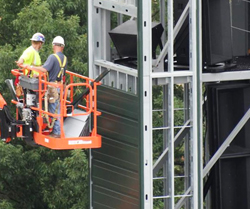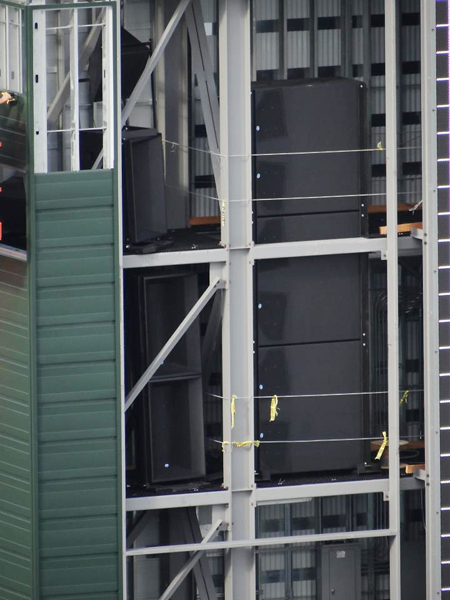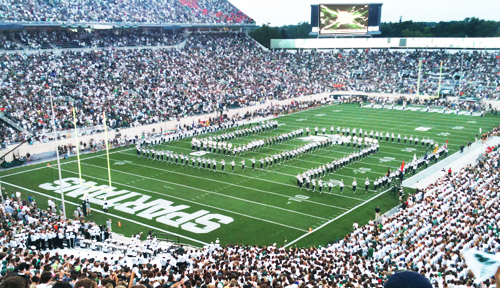
Nearly 80,000 students, alumni and fans pack Spartan Stadium on the campus of Michigan State University for every home football game each fall.
MSU has regularly expanded the facility since it was first constructed with just 14,000 seats in 1923, and just in time for kickoff this year, Spartan Stadium underwent a multi-million dollar audio/video systems upgrade.
The project includes the Big Ten’s largest video board (occupying 5,412 square feet) behind the sound end zone seating, two auxiliary video boards beyond the north end zone, and a new sound reinforcement system headed by Danley Sound Labs loudspeakers and subwoofers.
Apart from fills, just six Danley Jericho J3s provide all of the new system’s full-range coverage to the entire venue, delivering point-source fidelity and tremendous return on investment.
Led by director of audio engineering Larry Lucas, Anthony James Partners of Richmond, VA, conceived and designed the new system, while Pro Media/UltraSound of Hercules, CA, handled the installation and support services under the guidance of senior designer and engineer Demetrius Palavos. He managed the project from a germ of an idea to commissioning and beyond.
“There is definitely a shift occurring at the collegiate level that follows the shift that has been underway at the professional level for some time,” notes Palavos. “Everyone is recognizing that fans are routinely exposed to high-end home entertainment systems and car stereos. Even headphones and iPods offer a full-frequency experience. Such experiences have raised expectations for game day. School officials are now recognizing the need to meet those expectations at the collegiate level.”
At the same time, however, budgets remain tight given the stark economic realities of shrinking endowments, state-mandated austerity measures, and charitable gifts that are, well, less charitable than they might have been a few years ago.
“Danley systems have a lot to recommend them,” says Lucas, “but their most obvious advantage is an unprecedented return on investment for the client. The fidelity and coverage would be excellent at any price, but the actual price tag is tremendously low relative to that kind of performance. We were lucky at MSU because the Jericho J3 had just become available during the designing stages.”
Danley Sound Labs established Jericho as a point-source alternative to line arrays. The J3, with a dispersion pattern of 60 x 40 degrees, incorporates six 15-inch woofers, eight 6.5-inch cone drivers and four coaxial compression drivers – all feeding a large-scale horn with an enclosure measuring 30 x 35.6 x 48 inches. It’s capable of providing appropriate SPL by distance while sidestepping destructive interference problems that can plague high-output designs.

Controlling Energy
Whereas Spartan Stadium’s previous sound reinforcement system resided in the south end zone, Lucas designed the new system to fire from the north end.
“Previously, additional energy spilled out of the north side and into the community of East Lansing,” explains Lucas. “By placing all of the loudspeaker elements at the north side, we could be sure that any excess energy would spill out onto the campus instead.”
The design uses the two smaller scoreboards on the north side as rigging points for the Jericho J3s that are joined by Danley TH 812 Tapped Horn subwoofers to enhance the low end. The scoreboards are approximately 200 feet apart, and the coverage from each effectively splits the stadium in two.

